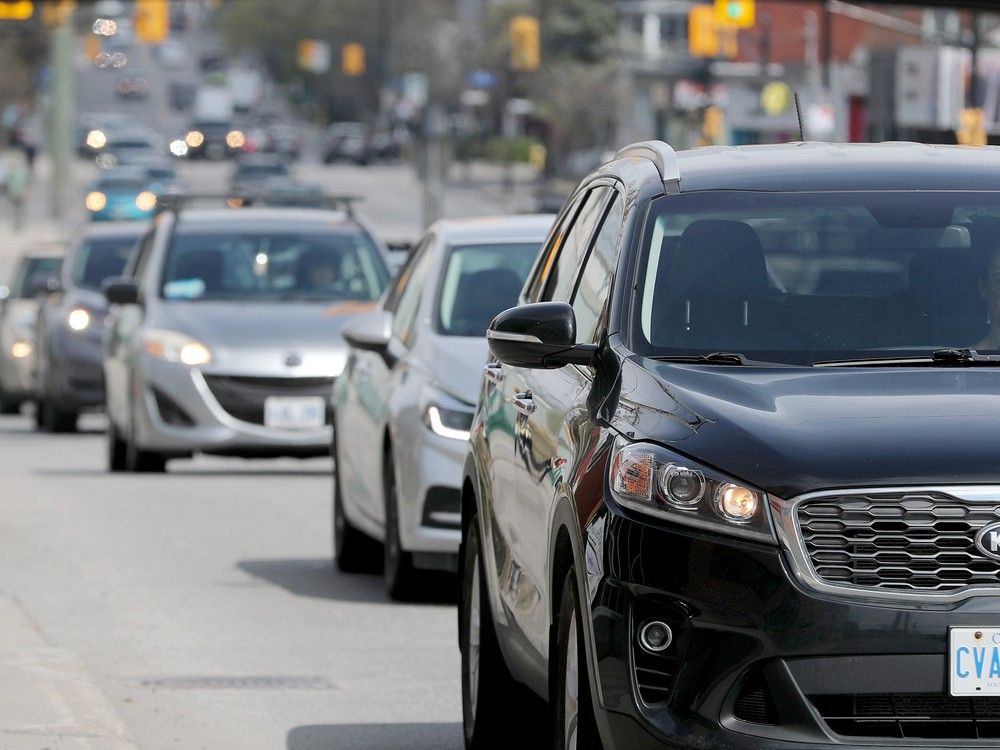I was driving south along
Colonel By Drive recently
, in that long curved section between Clegg and Bank streets, when a car passed me. For those unfamiliar with that stretch of canal-side roadway, it does not allow passing; most motorists, I think, wouldn’t even contemplate the notion, let alone try it. It’s simply too dangerous.
So for a moment, this driver’s gall and
utter disregard
for his (it had to be a him, right?) or anyone else’s safety took my breath away as I tried to memorize his licence plate in case I later read of a tragic hit-and-run farther along the road.
The incident brought to mind a question I frequently ask myself: Have we become a city of terrible drivers, and if so, how did this happen?
I don’t ask this lightly. For the longest time, I worried I was simply sliding into some inevitable state of old-manhood — that overstuffed couch of angry bombast from which yelling at kids who even look at your lawn is the chief reason for waking up each day. Perhaps I simply drank too much Cranky Man’s Kool-Aid and was now repeating the mantra: Of course drivers have gotten worse — everything’s gotten worse. That’s what things do.
But no. I’m convinced it’s not (just) me. It’s us. All of us. For even during the briefest outing in my car, I normally witness enough infractions of Ontario’s Highway Traffic Act to fill at least one row of my Bingo Card of Delinquent Driving: the Speed Demons, the Red-Light Runners, the Brake-Checkers, the Texting Drifters, the Tailgaters, the Intersection Lane-Changers, The No-Left Left Turners, the Right-of-Way Hogs, the Box-Blockers, the Horn-Leaners and, worst of all, the Middle-Finger-Givers and Epithet-Hurlers.
I’m hardly the only one to notice. Jamie Kwong, executive director of the Ottawa Safety Council, which oversees nearly 600 school crossing guards, says there’s been a notable rise in driver aggression in recent years. “What should be a safe and routine part of every school day has too often turned into a situation where our staff face unnecessary hostility from motorists.”
The situation, she adds, has reached a point where, in addition to the standard 10 hours of online and on-site instruction that all crossing guards receive, they are now also trained in de-escalation techniques.
The data, meanwhile, paints a concerning picture. According to the
City of Ottawa
, 61 per cent of fatal and major injury collisions in Ottawa between 2019 and 2023 involved high-risk driving behaviour. Stunt-driving charges in Ottawa doubled from 283 in 2016 to 563 in 2024. According to the insurance comparison site
rates.ca
, 78 per cent of drivers in 2022 said they had witnessed road rage, while 51 per cent admitted to engaging in it themselves. By 2024, those figures had increased to 83 and 56 per cent, respectively. Road rage is no longer the exception; it’s almost our default when we buckle in.
Robyn Robertson, CEO of the Ottawa-based
Traffic Injury Research Foundation
, says that the pandemic changed our driving behaviour. Drivers started taking greater risks. More than seven per cent of motorists, for example, admitted to driving while impaired. Those bad habits, she suggests, have been slow to fade.
At the root of it is stress. “The pandemic took its toll on health and mental health,” she says. “We saw substance use generally increase. That speaks to the stress and pressure people feel in their daily life, and I’m not sure we’ve fully recovered from that. Some of the risk-taking we’re seeing on the road is just a reflection of more stress.”
We’ve all seen drivers blow through red lights without even an attempt to slow down. Robertson says that she’s gone through yellow lights because she’s convinced that the driver behind her isn’t going to stop.
The pandemic, she says, brought about other changes, including reduced drivers’ education standards. Ontario, for example, shortened its road test and eliminated the highway driving portion. The number of practice hours needed to get a driver’s licence isn’t adequate. “Research says at least 50, if not 80 and up to 120 practice hours, is needed, and we are nowhere near that in any jurisdiction in North America.” One local driving school I looked into offers MTO-approved courses that include 20 hours in class, 10 hours in car, and 10 hours of homework. However, this is not mandated by the province; in
Ontario
, there is no set minimum number of hours of practice required to get a driver’s licence.
Meanwhile, and not surprisingly, there’s a wide chasm between what we say we believe and what we actually do. According to Canadian Automobile Association
surveys
, more than 90 per cent of Canadians believe using their phones while driving is a serious threat to their safety, yet almost half of us — including, I hate to say, me — have programmed a destination on our GPS or mobile device while driving, and almost 80 per cent admit to doing something distracting while behind the wheel.
“A good portion of the population does not realize that they’re distracted,” says Robertson, “because they have a thought process of, ‘I’ve always done this, and I’ve never been in a collision.’ But they’re missing the word ‘yet.’ ”
We’re all trying to get somewhere a little faster, a little less inconvenienced, and we’re endlessly thwarted by obstacles: bad drivers, construction, growing traffic volume, detours — and more bad drivers. While we’re busy playing Bingo in our cars, though, we’d do well to admit that we ourselves are not nearly as safe or skilled as we imagine. Otherwise, we’ll continue to text at red lights or race through them in the belief that nothing untoward will happen — until it does.
Related
- How Ottawa’s stunt-driving is spiralling out of control
- Deachman: Speed-camera threat — Doug Ford shows he’s the irresponsible driver’s best friend



